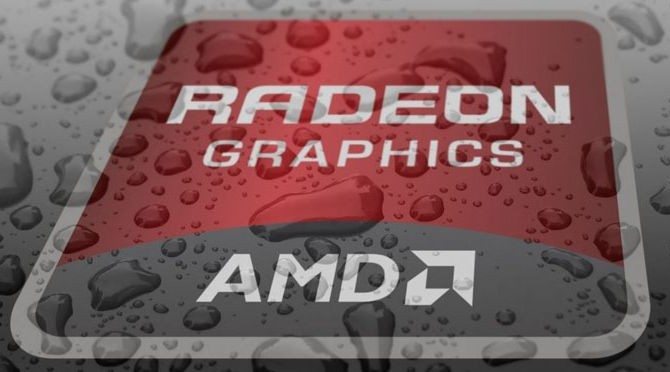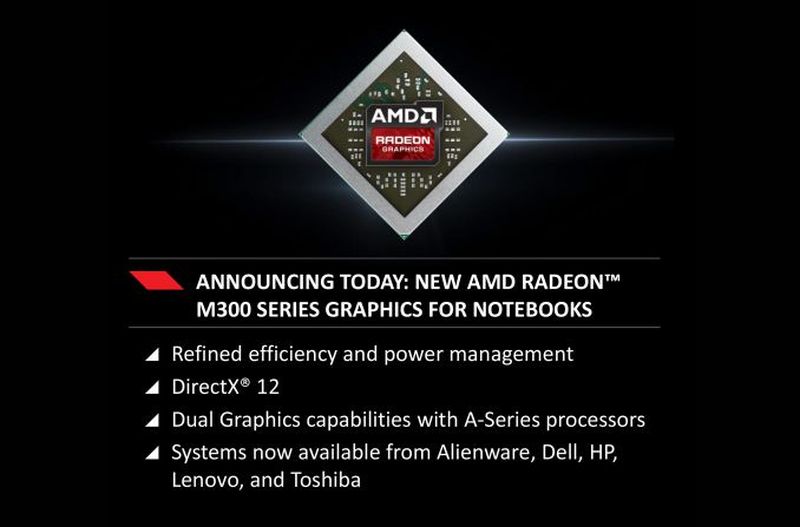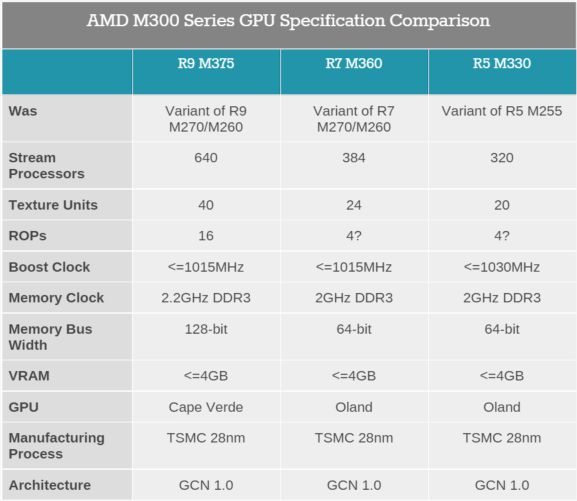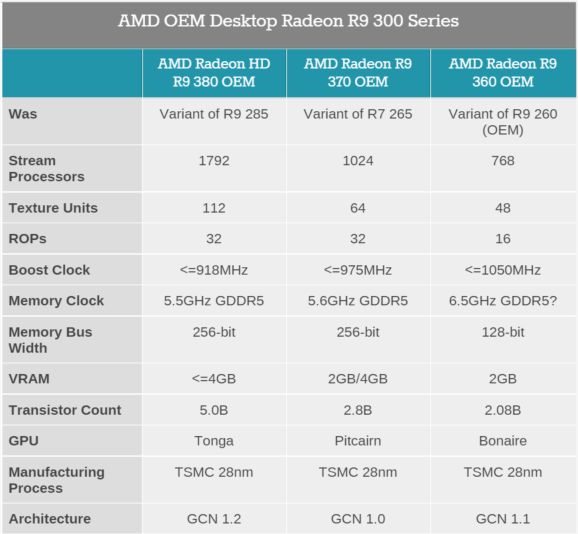AMD Officially Announces First Radeon 300 Series Cards
Bohs Hansen / 10 years ago

AMD held a rather low-key press event where they officially introduced the world to the first new graphics cards from the Radeon 300 series, both desktop and mobile versions. There was a reason for the lack of focus on the news and as you might have guessed already, it is rather a list of rebrands than actual new cards. OEM manufacturers need new products to move their systems, and rebranding is an easy way to achieve that.

The new mobiles series is called the Radeon M300 and consists of the R9 M375, R7 M360, and R5 M330 cards, for now. It isn’t exactly clear what GPU the cards are using, but the released specifications point to a rebranding of the R9 M270, R7 M260, and R5 M255 cards. They’re using the Graphics Core Next 1.0 feature set which will limit them from newer features.
The new AMD Radeon M300 series has a much higher GPU clock speed than the previous M200 generation, but in return comes with decreased memory bandwidth and just DDR3 and not GDDR5 memory. This is a weird move, but one that could point towards a paired use with an APU rather than standalone. OEM builders are said to be ready with systems featuring these new cards, so we will know more shortly. No word on M380 or better mobile GPUs yet, but expect more of that around Computex.

The desktop versions aren’t much more exciting than the mobile versions, but we are getting introduced to a couple more products. Once again, it appears to be a list of rebrands and mainly intended for OEM manufacturers. This also fits well with HPs accidental R9 380 leak the other day.
AMD introduced a total of seven new OEM desktop GPUs, but the only ones that are worth looking at are the R9 380, R9 370, and R9 360. These three cards are somewhat interesting, but the other four cards are more for systems without an iGPU but that still need some form of display connection: R7 350, R7 340, R5 340, and R5 330.

The R380 looks like it’s a perfect match with the R9 285 over the entire scale and it is the first time that the Tonga chip gets a rebrand. The R9 270 on the other hand, is a worrying rebrand as it’s the 4th generation of cards to use this chip. It lacks the newer features such as the ability to decode 4K H.264 video files, AMD’s improved power management technology, and support for AMD FreeSync technology. The R9 260 OEM is built around the Bonaire GPU that is a newer generation with GCN 1.1.
We have to keep in mind that these are OEM cards and the retail versions might come with different specifications, but so far this hasn’t impressed. AMD is still holding back with their real new generation of cards, and I for once can’t wait to get my hands on an R9 390 or R9 390x this summer.
Thank you Anandtech for providing us with this information



















